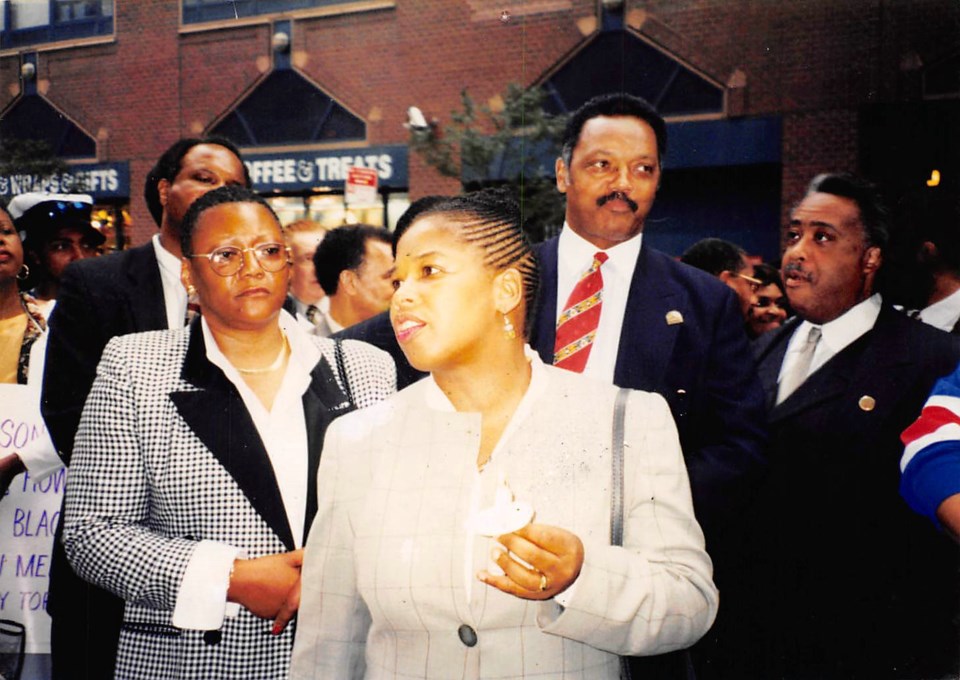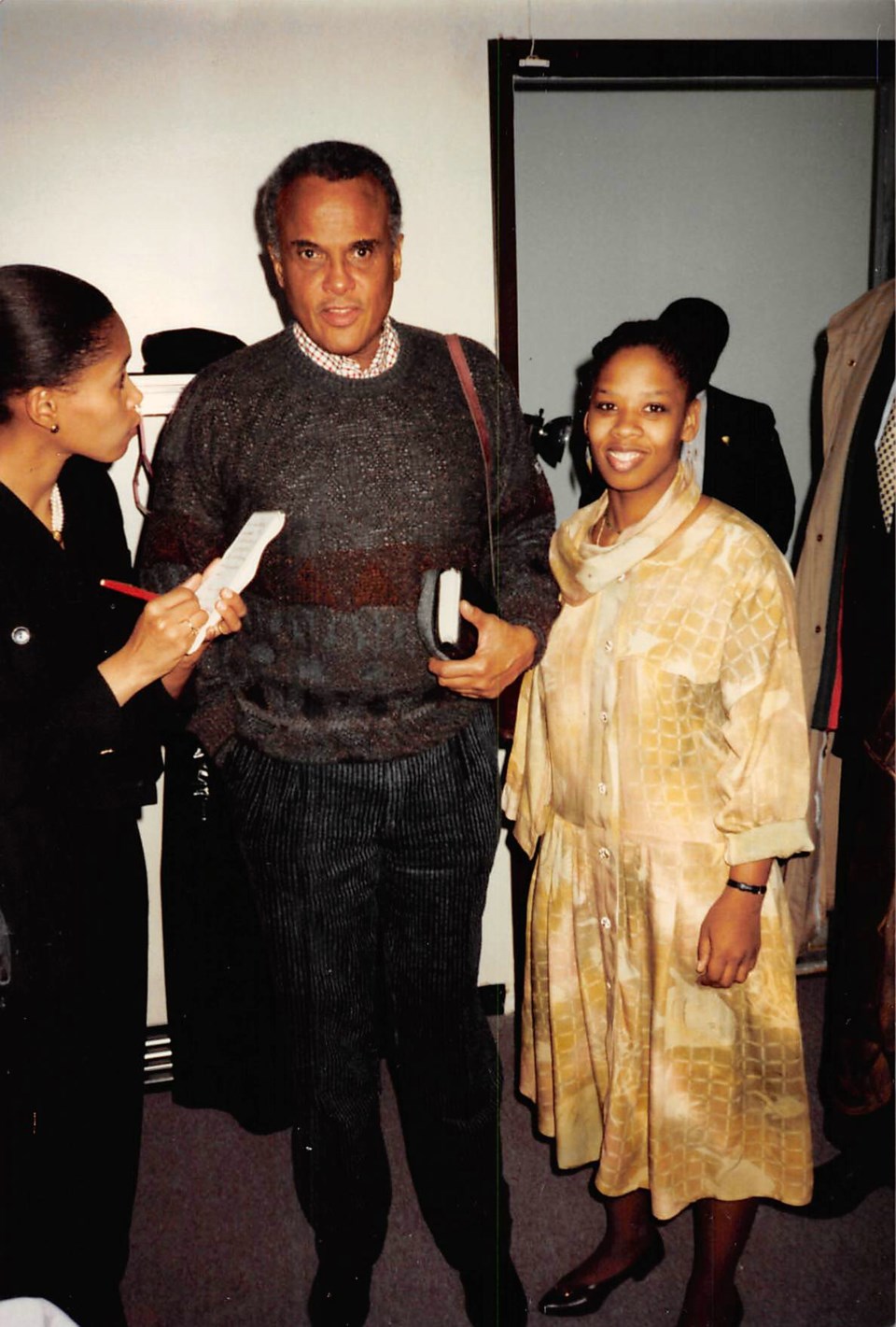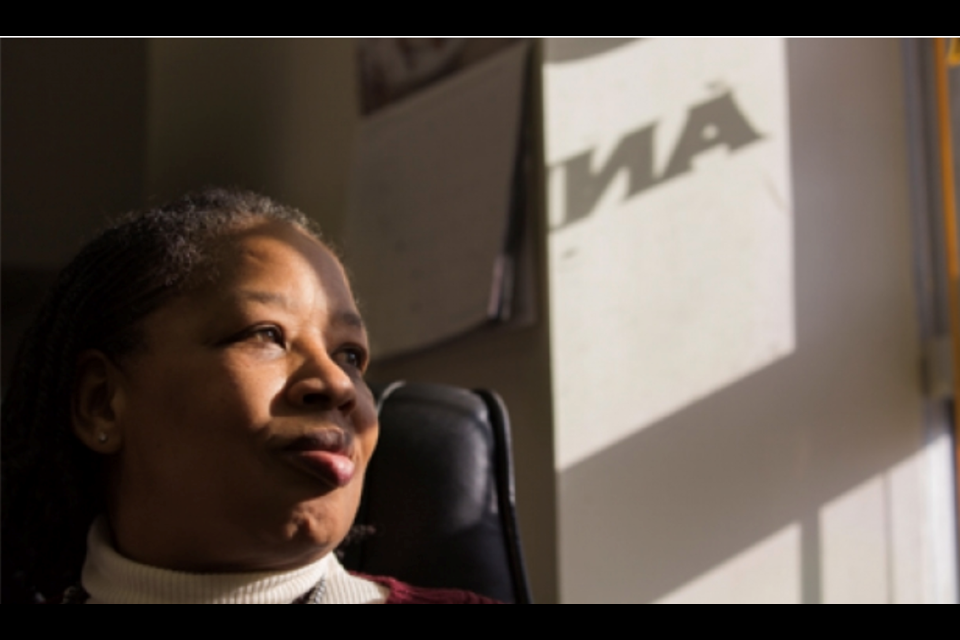On this auspicious day of June 28, the Center for Law and Social Justice at Medgar Evers College is poised to host a Summer Gala at the esteemed Giando on the Water event space in DUMBO, Brooklyn. This momentous occasion aims to pay homage to the enduring legacy of the Center's revered Founding Executive Director, Esmeralda Simmons, Esq., while commemorating nearly four decades of unwavering grassroots community advocacy and organizing in the vibrant tapestry of New York City, particularly for its esteemed Black residents.
In 2020, Simmons stepped down as founding executive director and selected Lurie Daniel-Favors, Esq. to continue in her role as the Center's Director.
Having gracefully concluded her remarkable 24-year tenure, Esmeralda Simmons now stands as a beacon of inspiration and reflection as the CLSJ takes a retrospective glance at the indelible impact and invaluable contributions she has bestowed upon the Black community in New York over this time.
In this intimate interview, Ms. Simmons graciously sat down with BK Reader to share the motivation behind the organization's formation, as well as the pivotal individuals who catalyzed its movement. She delves into the challenges encountered and triumphant moments experienced throughout the journey, offering a deeper understanding of the Center's rich history.
BK Reader: You grew up in Brooklyn. How much did your childhood experience shape your decision to become a civil rights attorney?
Esmeralda Simmons: Um, It was moving from the all-Black New York City Housing Project in Albany Park to a predominantly white community that is now called Prospect Lefferts Gardens. Me and my two sisters integrated a catholic school close to President’s Street and Lincoln Road. We experienced some overt racists acts during our time there.
The first year we were there several times during that year, we were chased home by some teenage boys, shouting the n-word and telling us to “Get out of our neighborhood.” We only lived three blocks away from the school. The whole idea was that we were ‘the others,’ and they were the entire society, and were polluting their neighborhood and should not be disturbing their peace.
The same nonsense happened when we went to basketball practice at Wingate park outside with a bunch of Italian thugs. This bullying went on and on and the school and the authorities were not listening to us. So, I basically had to stand up for my sister who was being bullied. They were much older than us. You know, um, the only way I knew to defend her was try to talk to them. I would ask, ‘Why are you doing this?’ to try to reason with them.
BKR: But your parents insisted you go to this school. Why?
ES: My parents had absolute belief in me and my sisters and our abilities and wanted to challenge us to always be the best. And we were quite a bunch of academic stars at the school. Still, I was traumatized when they tried to not let my sister get her valedictorian prize and give it instead to a little Italian girl, even though she was number one in her class. I got my parents to to speak at that time because they usually did not want to come up and challenge authority. But I convinced them to go up there, and she eventually got her her just rewards.
BKR: So you had already become quite the negotiator as a child. What were your college years like?
ES: You know, again out of a school that had six thousand, there were 90 black students. I was one of them and we demanded a black studies department. I was mentored by John Henrick Clarke and Pearl Primus. And both of them told me I need to go law school. I was training to be a teacher, but i thought about it and said, you know, that's a good idea: I was used to leadership and public speaking and I wanted to be able to make more money for my family. And I already had one child by then. They said, we need champions and you make a very good champion. Um, you'll understand things easily quickly and you can articulate. So that's what they told me to do. That's what i did. My parents were delighted with it.

BKR: Tell me the story of how CLSJ came together. I know that it was formed in response to the inordinate number of police beatings and arrests of Black New Yorkers in the 80s. But is there some insight you can share about the people, the players and the community response?
ES: Yes, there are people that need to be credited for CLSJ that don't often get any credit. And that's C. Vernon Mason, Alton Maddox Um and Michael Warren, who as activist attorney came up with the idea of a center. And he petition to get the center funded, they were not successful. I was then, serving as the first deputy commissioner for human rights for the state of New York. They knew me because i was an activist attorney. And I had served as a head of one of the Black bar associations. But they came to me and said, how could we get this funded? I looked at the proposal. I said, let me rewrite this. I rewrote it. They took it to Roger Greene who was an assemblyman for the Fort Greene area. I had been Roger Greene's electoral attorney, from beginning to end, so I also pressed upon him that this would be a very good thing. We wanted to establishment center that would be more than reactionary to every police killing and every racial violence killing. So, it got funded through Roger Green and the Black and Puerto Rican Legislative Caucus in Albany. It was to be attached to Medgar Evers, which was one of my ideas. And it also had a relationship with the CUNY law school, which was brand new. And had an activist attorney as the dean. And, um, I was hired for the job. I had a very broad civil rights training and background. So I was prepared for the role.
I created the the administrative structure of the center to be research, advocacy and community education and training community, education. We had a research director, social sciences PhD that was directing our research who would research the topic before we decided to act on it. And sometimes we decided not to act on, based upon the research. We did policy advocacy, as well as litigation and a great number of trainings for the community and a regular series of community forums or people in stay up to date with what was happening and what was really affecting their lives.

BKR: Who were some of the key players that formed the early days of CLSJ that you worked with, because I have read that it was the who's-who of intelligencia and activsm of that time..
ES: We had top-shot folks that came in, some people that were veterans from The East, like Martha Bright and Abimbola Waliand then we had people like Wendy brown and other attorneys, Harvard law graduates, Columbia Law graduates.. We had, we had the top notch people that wanted to work for our folks, And, you know, we had uh, folks who are doing education, training people; parents that went on to be co-educators with the public schools and to be leaders in the public schools. We did a tremendous amount of work on child welfare. We had Joan Gibbs, one of the best best activist lawyers in the country-- dare I say world-- who came and served as our general counsel and definitely pushed us forward in the work that she did; she wasn't afraid to take on anything.
And then we had Lurie Daniel-Favors come on to be our general counsel and heir apparent as the director of the center. So we've had superstars. Maurice Reed .Peter Williams did our public advocacy and public policy work and the brilliant, and the brilliant Wayne Winborne was our research director for many years and started many of our research programs that were award-winning a nd supported our litigation. I have a named everybody, but we've had some superstars.
BKR: What are some of the best and most useful organizing strategies from back then that you feel could be useful for us today? And the reason i asked this is because we have such a hard time getting folks to organize and commit in the same way and i know we're in a different time. But in many ways we're trying to solve the same problems.
ES: I'll put it like this: I actually have another opinion. I think the Black Lives Matter Movement, which had more people in the street than the Civil Rights Movement did throughout our history, has shown that younger people are more willing to come out and protest and do it has to be done. They simply need to have people organizing it, and there needs to be continual political education. I'm emphasizing that again: There needs to be continual political education. You can't do one shot deals. That's called mobilization, as opposed to organizing. So, organizing involved political education and political action. We have plenty of people willing to do political action, particularly protest. We don't have a lot of people that are willing to put in the time to just do political education. We need political education schools, you know where we have forums and discuss what the economy is really about. We talk about how our political parties operate and the limited power of our elected officials, so that people get it out of their heads that all we have to do is elect people... That's what's necessary. Unfortunately, I think the Internet has made it worse. I think people think all they need to do is turn on their phone. But we need a level of body commitment. People need to come out and build relationships with each other and do things that go beyond mobilization.
I'm on the internet every day. It's not good enough to just throw something out there on the internet and think they and everybody's gonna hear about it. No, everybody is not going to hear about it. And the good old drum works, word of mouth is more reliable than the internet. You have a friend, call you up and say, I'm going to this thing, please come with me. I want you to hear about it. That is will stick with that person a thousand times, more than reading something on the internet. We do need it. But it is not enough. We need physical presence. People need to put their butts in the seats and and their feet on the streets.
BKR: So CLSJ lists its core work as being the fight for fair representation and equitable community investment. Please provide me a few examples of what fair representation looks like for just a lay black person, how is that relevant to them?
ES: Fair representation alludes to the notion of democracy in the United States, where they're supposed to be one person, one vote. That means, for every person that there is living in an area that person should have the same amount of voting power as the person living in in another area within within the political jurisdictions. That means that um if you divide the city up into 50 district, each of those 50 districts should have the same amount of people within the district so that all the people in the different have the same voting power.
So what is this all mean? If somebody is not watching a chicken coop, the fox makes off with the chickens, okay? CLSJ has been watching the redistricting of the chicken coop for black voters for 40 years. We have been the only people, the only institution, that has done fair redistricting for black folks, in all of New York City for 40 years. And I'm saying 40 years because I brought that that skill with me. So CLSJ has been working on redistricting since1990. It is very important and very significant that we are the only Black voice that has been following this consistently and the only institution that hires the skills of Black statisticians to analyze the Census data to see what we can do; what is possible; and what is not possible. If you don't have that kind of skill, you don't have that kind of research, you can't do this work. It's not lawyers that do this work. It is social scientists and political scientists, and we've had some of the best!
And currently we have the ableness of doctor Zulima Blair, who is the leader of our redistricting research team and has been doing this now, she just finished a second round. And before that, we had to famous Frank Lewis, who was a redistricting statistical expert and a statistician. And we had other people that were just as skilled helping out on our team. That's how you get it done, that's how you get fair representation.
And so, yes, we have been doing that work. And because we changed the charter to make it more equitable, the majority of the city council is now People of Color and majority women. And people was with smaller communities, the Pakistani community, you know, new immigrant community, southeast Asian communities, they have all elected representatives because of the long legacy of work of CLSJ and a coalition of advocates of color. You can't do this alone, folks. We're multi-racial society and you need other advocates. We work for people. So that's fair representation. That's how we do.




